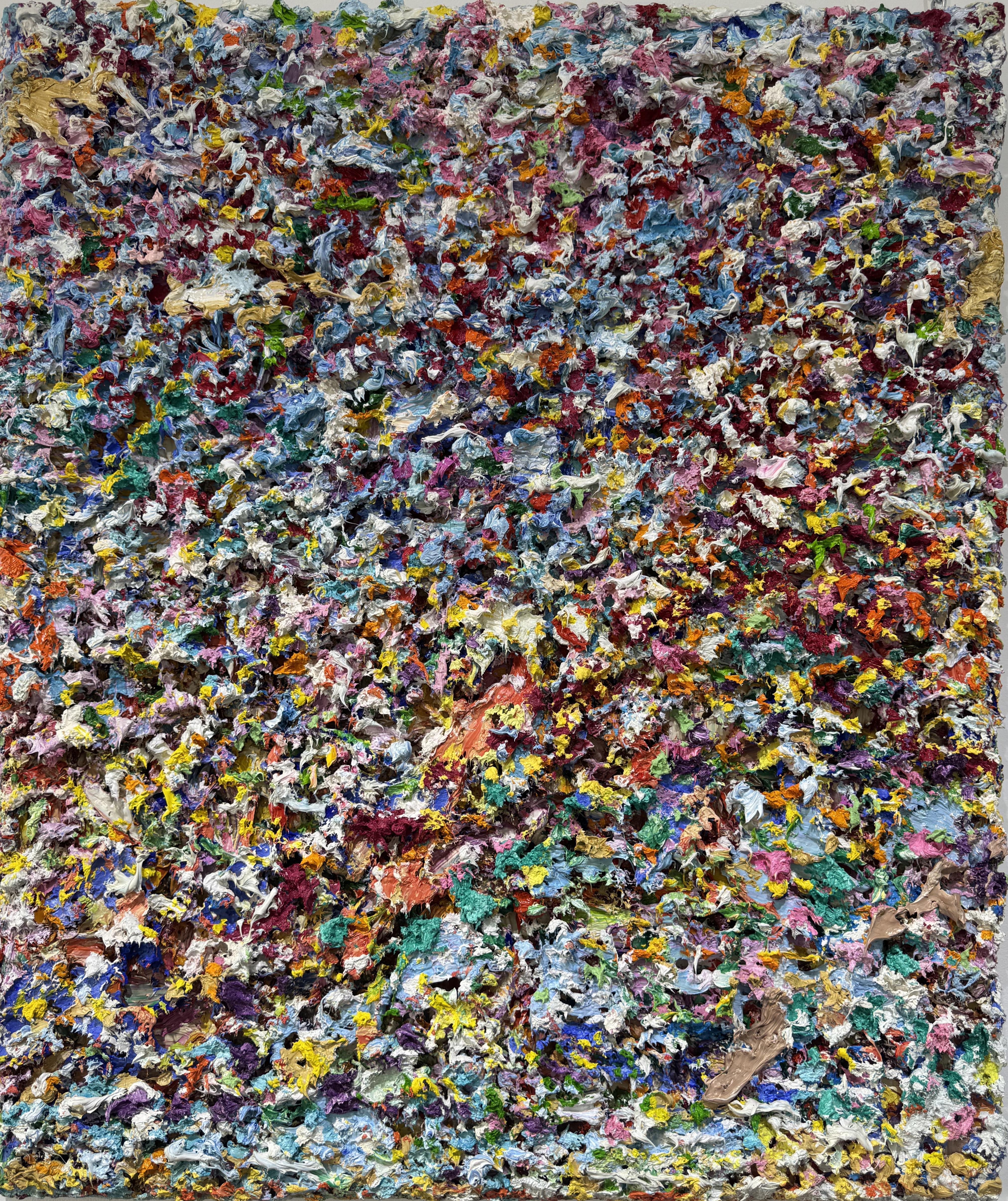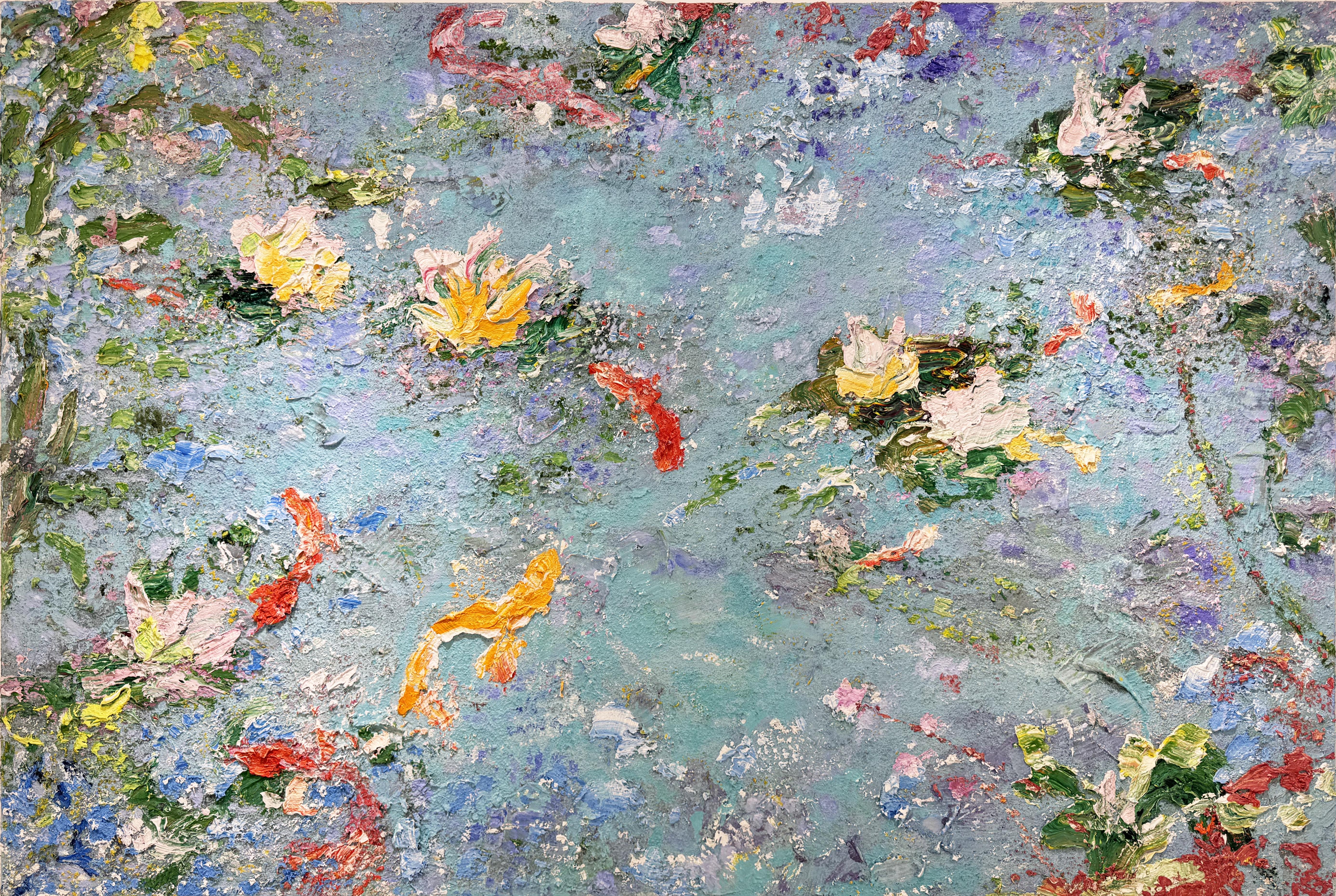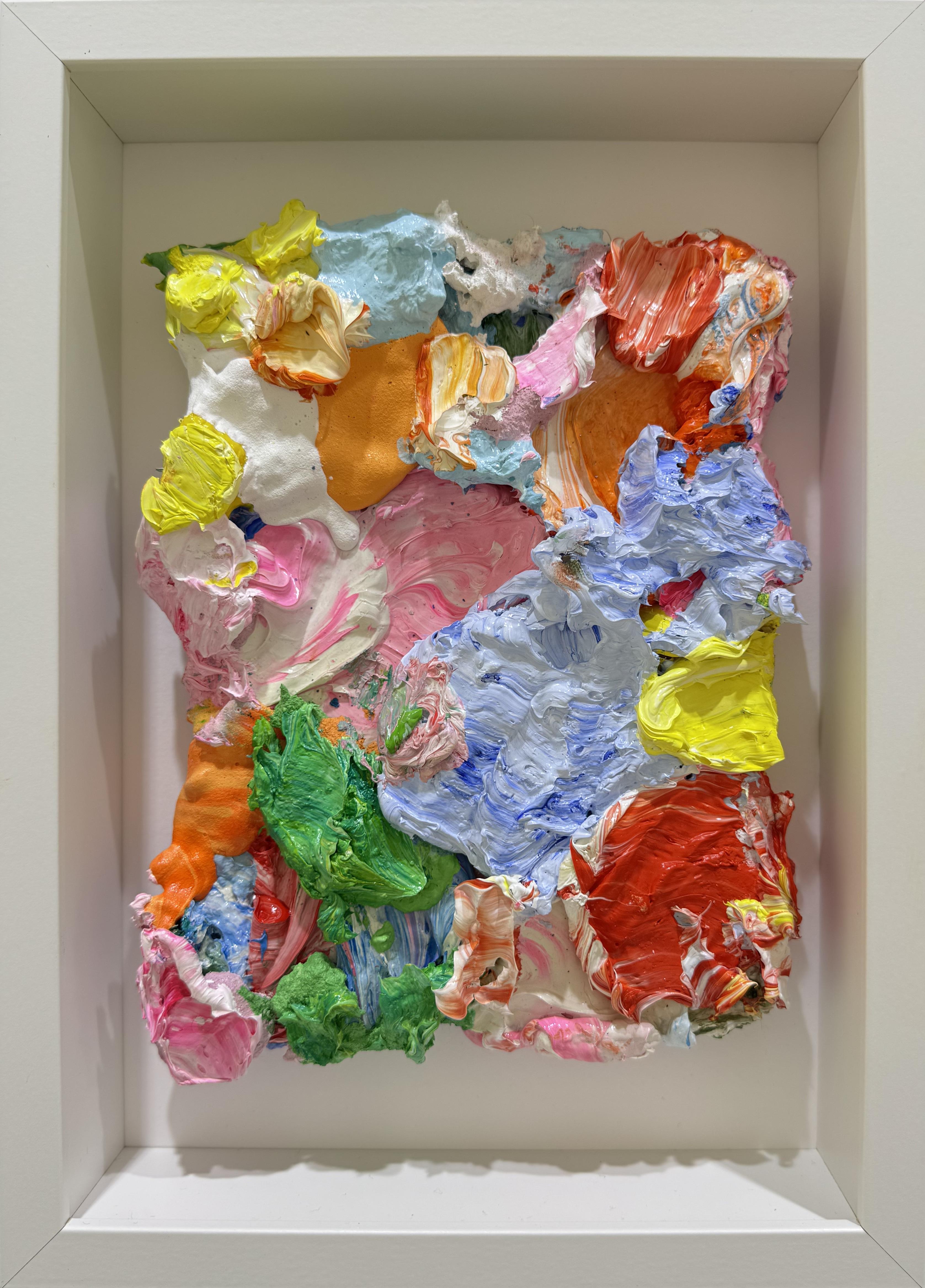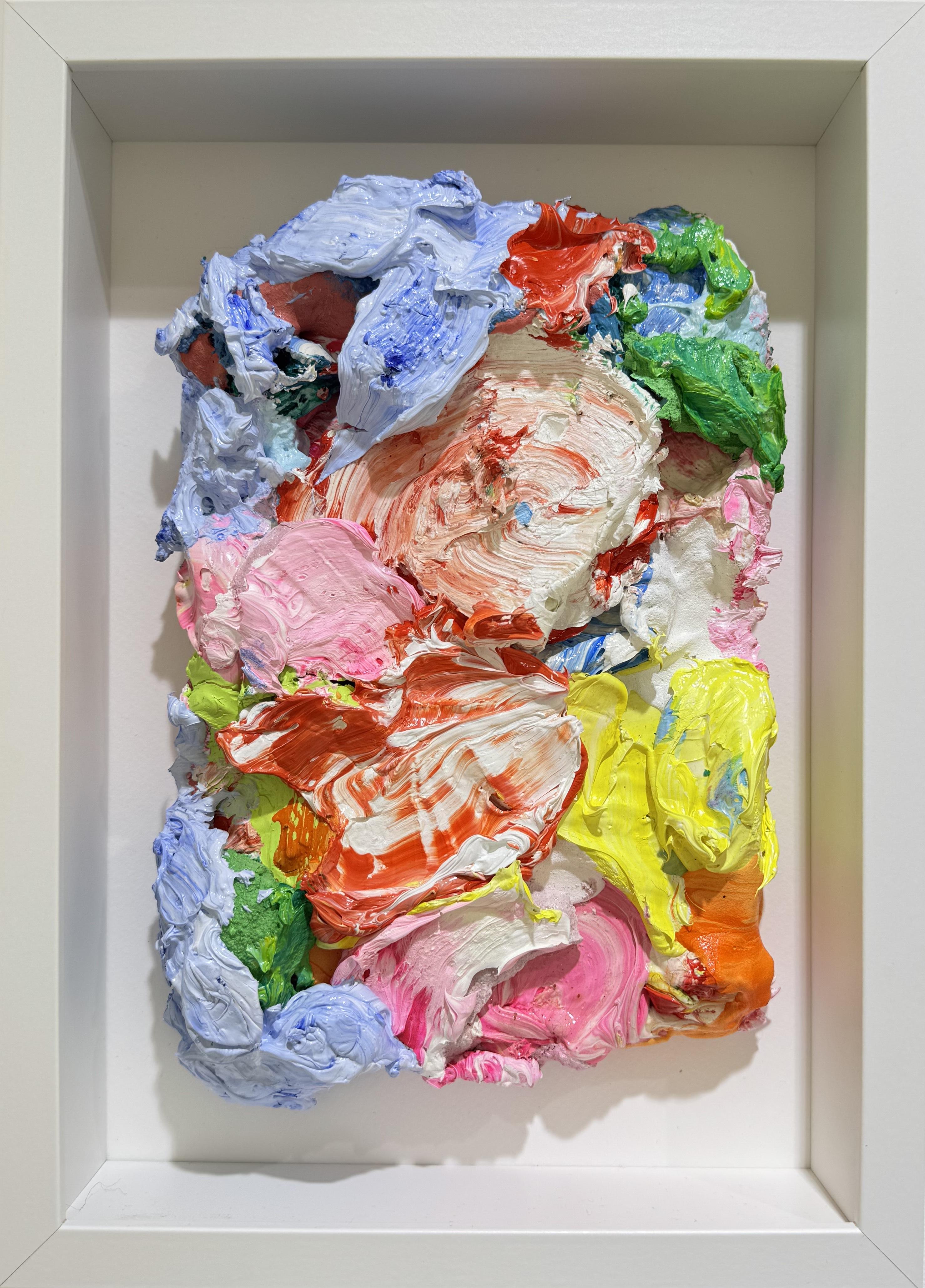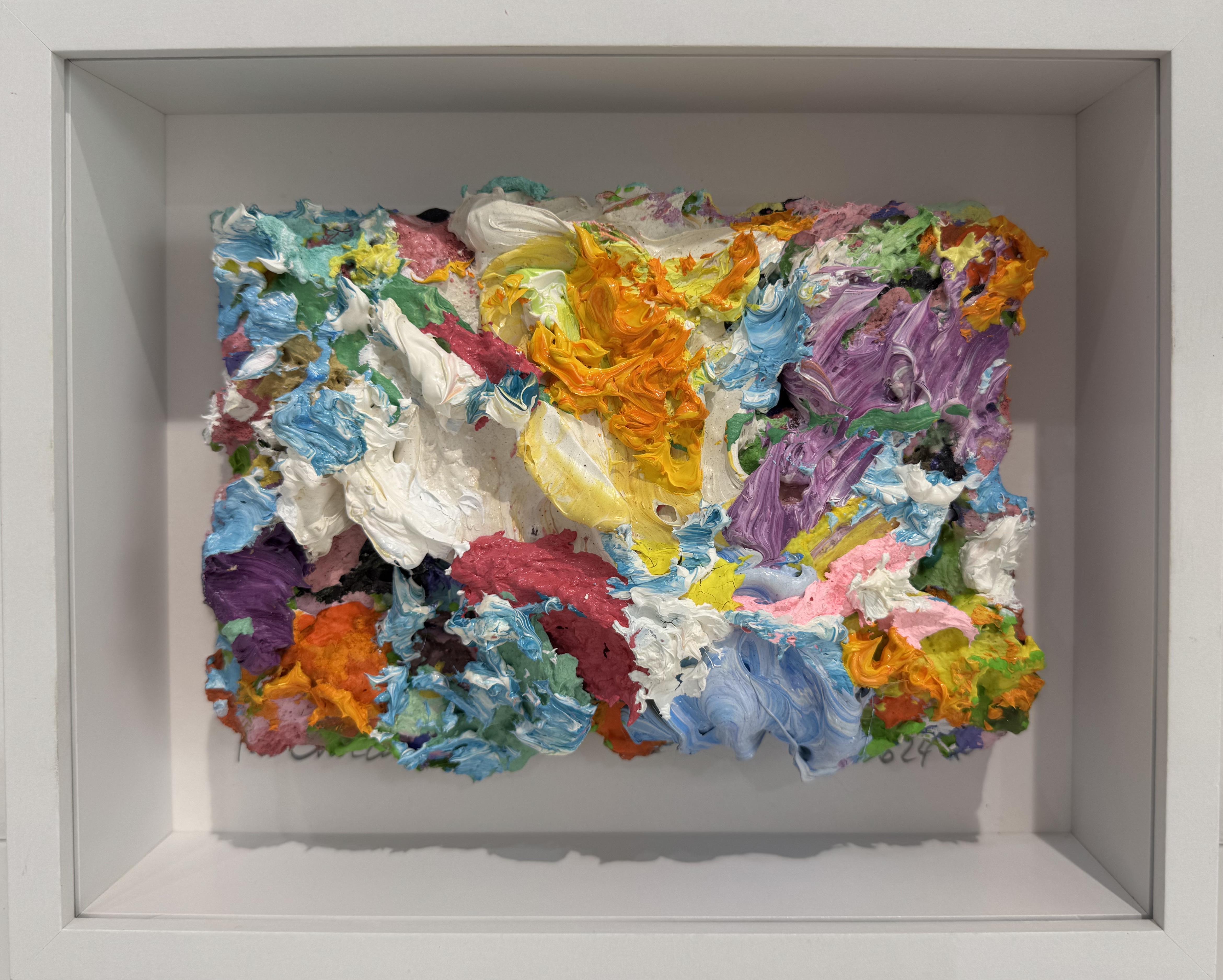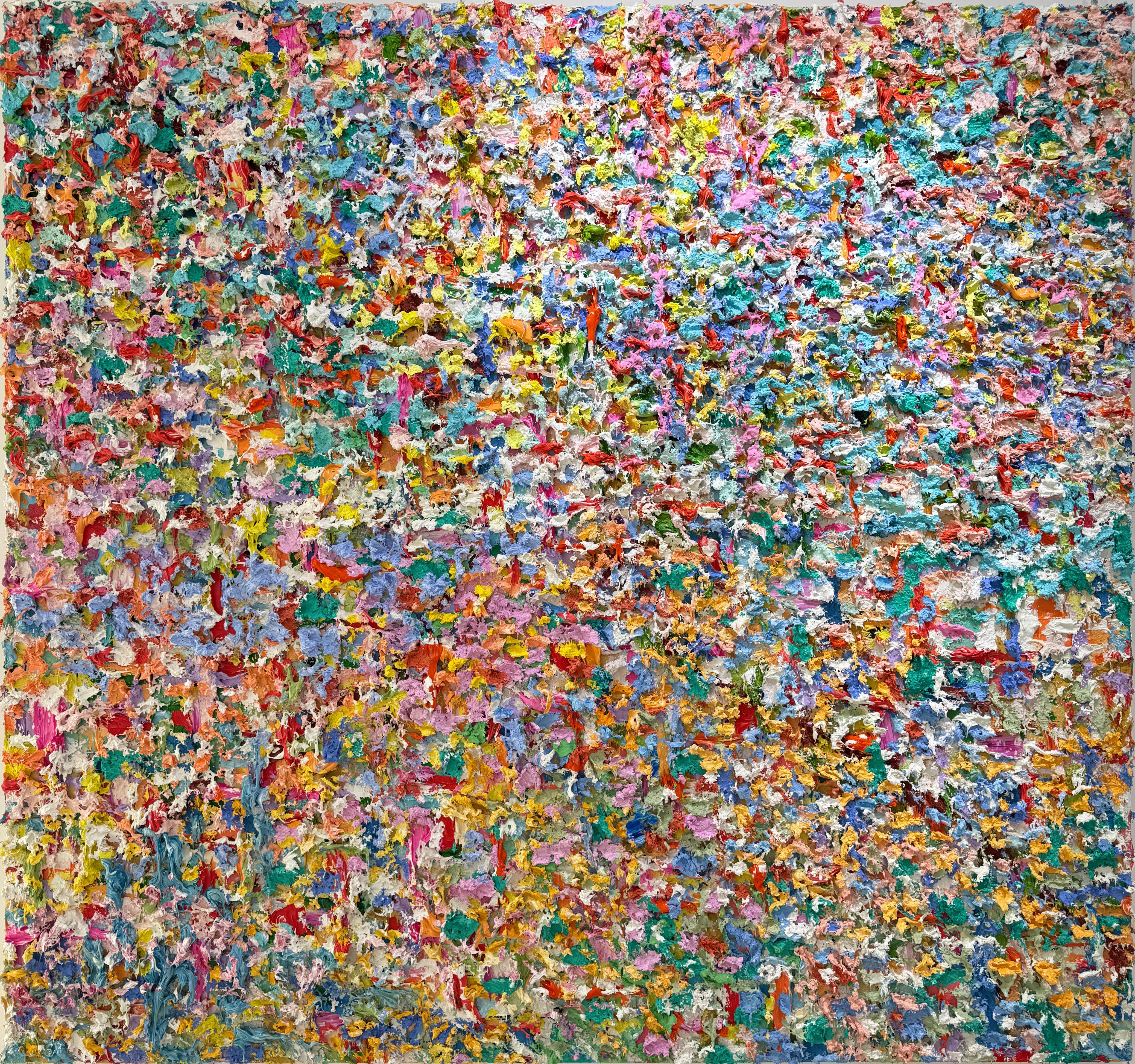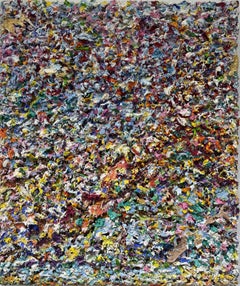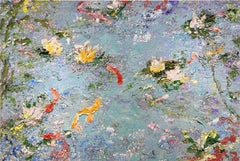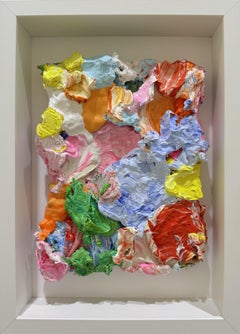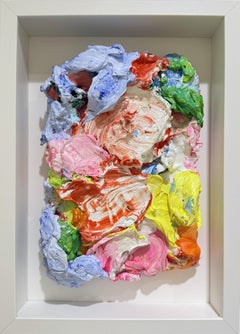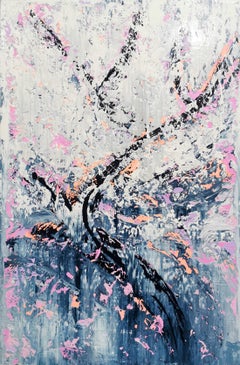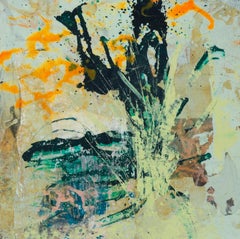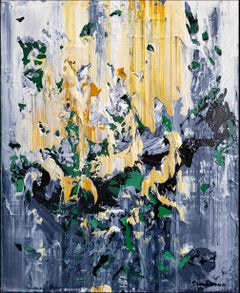Want more images or videos?
Request additional images or videos from the seller
1 of 10
Pascal CourcellesFleur, 20252025
2025
$5,305.17
£4,029.41
€4,500
CA$7,446.69
A$8,132.36
CHF 4,268.79
MX$97,540.31
NOK 53,763.28
SEK 50,504.41
DKK 34,274.35
About the Item
“Fleur”, 2025
Mixed media on wood, edition 1/1
30 × 40 cm (11.8 × 15.7 in)
Unique piece – signed and titled by the artist on the reverse
“Fleur” (2025) is a radiant and emotionally charged painting by Pascal Courcelles, part of his ongoing exploration of color, gesture, and material. Boldly sculptural and profoundly lyrical, this unique piece offers a contemporary take on floral subjects — not as botanical illustrations, but as expressive explosions of texture, color, and emotion.
At the center, a large pink and crimson blossom unfurls across a textured sea of cerulean blue. Surrounding it, lush strokes of green, yellow, and orange swirl like leaves caught in motion. The surface itself is alive with dimensionality — thick impastos and embedded materials that give the work a powerful tactile presence. This is not a flat painting, but a living composition where color emerges from the depth of matter.
“Fleur” is a one-of-a-kind creation (edition 1/1), made on a hand-prepared wooden support and signed on the reverse by the artist. The back of the work, fully painted and inscribed by Courcelles, reads “Hope Rose”, suggesting both the title’s poetic resonance and the emotional intent behind the piece. This direct intervention by the artist on both sides of the work adds to its authenticity and collectibility.
Courcelles’ work is internationally recognized for its materiality and depth. He transforms everyday subjects — like a flower — into something elemental and spiritual. This piece belongs to a recent cycle of paintings where organic forms, thick textures, and luminous pigments merge in total harmony. It is a singular gesture of beauty and strength.
In perfect condition, “Fleur” feels more like a painted relief than a traditional canvas. The paint has weight, volume, and movement — as if blooming directly from the surface. Even without framing, the edges are treated with care, and the work is ready to hang. Every angle reveals a new detail, from swirling brushwork to subtle tonal shifts, creating a constant sense of discovery.
This piece is ideal for collectors who are drawn to works that combine presence, poetic charge, and material boldness. “Fleur” brings nature into the realm of the abstract, offering an experience that is both meditative and intensely physical. It stands as a testament to Pascal Courcelles’ unique ability to make painting not only something we see, but something we feel.
About the Seller
5.0
Vetted Professional Seller
Every seller passes strict standards for authenticity and reliability
Established in 2020
1stDibs seller since 2022
7 sales on 1stDibs
Typical response time: 1 to 2 days
- ShippingRetrieving quote...Shipping from: Porto, Portugal
- Return Policy
Authenticity Guarantee
In the unlikely event there’s an issue with an item’s authenticity, contact us within 1 year for a full refund. DetailsMoney-Back Guarantee
If your item is not as described, is damaged in transit, or does not arrive, contact us within 7 days for a full refund. Details24-Hour Cancellation
You have a 24-hour grace period in which to reconsider your purchase, with no questions asked.Vetted Professional Sellers
Our world-class sellers must adhere to strict standards for service and quality, maintaining the integrity of our listings.Price-Match Guarantee
If you find that a seller listed the same item for a lower price elsewhere, we’ll match it.Trusted Global Delivery
Our best-in-class carrier network provides specialized shipping options worldwide, including custom delivery.More From This Seller
View AllFalaise, 2025
Located in Porto, 13
“Falaise”, 2025
Mixed media on canvas, edition 1/1
100 × 80 cm / 39.4 × 31.5 in
Unique piece – signed by the artist
“Falaise” (2025) by Pascal Courcelles is a vibrant, textural field...
Category
2010s Abstract Abstract Paintings
Materials
Canvas, Oil
Belle Lumière, 2025
Located in Porto, 13
“Belle Lumière”, 2025
Mixed media on canvas, edition 1/1
130 × 190 cm / 51.2 × 74.8 in
Unique piece – signed by the artist
“Belle Lumière” (2025) is a luminous and poetic work by Pas...
Category
2010s Abstract Abstract Paintings
Materials
Canvas, Oil
Miniature, 2024
Located in Porto, 13
“Miniature”, 2024
Oil on wood, edition 1/1
23 × 18 × 3 cm (framed: 32 × 23 × 6 cm)
Unique piece – signed by the artist
A vibrant explosion of color and texture condensed into a compa...
Category
2010s Abstract Abstract Paintings
Materials
Wood, Oil
Miniature, 2024
Located in Porto, 13
“Miniature”, 2024
Oil on wood, edition 1/1
26 × 16 × 3 cm (framed: 32 × 23 × 6 cm)
Unique piece – signed by the artist
A celebration of pure, unfiltered color, “Miniature” (2024) by ...
Category
2010s Abstract Abstract Paintings
Materials
Wood, Oil
Miniature, 2024
Located in Porto, 13
Pascal Courcelles
“Miniature”, 2024
Oil on wood, edition 1/1
16 × 20 × 3 cm (framed: 22 × 27 × 6 cm)
Unique piece – signed by the artist
A radiant composition that seems to bloom fro...
Category
2010s Abstract Abstract Paintings
Materials
Wood, Oil
Chance, 2025
Located in Porto, 13
“Chance”, 2025
Mixed media on canvas, edition 1/1
160 × 170 cm / 62.3 × 66.9 in
Unique piece – signed by the artist
Bursting with energy, rhythm, and color, “Chance” (2025) by Pascal...
Category
2010s Abstract Abstract Paintings
Materials
Canvas, Oil
You May Also Like
Abstract 2225
Located in Zofingen, AG
This is a one of a kind painting, an absolutely spontaneous, vibrant and unique creation by me, Alex Senchenko
This high quality acrylic painting is done on gallery wrapped canvas, ...
Category
2010s Abstract Abstract Paintings
Materials
Acrylic
Abstract 22168
Located in Zofingen, AG
There’s something different about the homes of creative people. They like to surround themselves with inspiring things, from unique tablecloths to the incredible paintings on the wal...
Category
2010s Abstract Abstract Paintings
Materials
Acrylic
Flowers for Me
Located in San Francisco, CA
Paula Valenzuela
Flowers for Me, 2022
Acrylic and mixed media on panel
Unframed dimensions: 12 x 12 inches
Framed dimensions: 13 x 13 x 1 inches
Paula Valenzuela's signature style c...
Category
21st Century and Contemporary Abstract Abstract Paintings
Materials
Mixed Media, Acrylic, Panel
Abstract 2346
Located in Zofingen, AG
ARTIST : Alex Senchenko ©
Title : Abstract 2346
Technique: Acrylic & structure on canvas
55cm. x 45cm.
Original Painting on a 4cm Deep Canvas
Ready to hang
2023
--------...
Category
2010s Abstract Abstract Paintings
Materials
Acrylic
Abstract 2236
Located in Zofingen, AG
There’s something ethereal, almost magical, about contemporary paintings. The
incredible Expressionism bleeds through the canvas, transforming any room into an
entirely new experienc...
Category
2010s Abstract Abstract Paintings
Materials
Acrylic
Abstract 2554
Located in Zofingen, AG
In this piece, I poured my emotions into thick, textured acrylics, letting colors collide and dance freely. It’s a celebration of spontaneity and lightness, capturing moments of joy and vulnerability. The blend of soft pastels and bold strokes brings warmth and energy, ready to uplift any space with its vibrant, expressive spirit. It invites you to feel the movement and breath of life in every layered stroke.
⭐ Artist : Alex Senchenko
Title: Abstract 2554
📐 Size: 100cm. x 30cm.
🖌️ Medium: Professional Gallery Canvas, Acrylic Paints
Original Painting on a 1.5cm. Deep
"GALLERY WRAP" Stretched Canvas
🎨 Style: Abstract Contemporary Modern Wall Art...
Category
2010s Abstract Abstract Paintings
Materials
Oil, Acrylic
